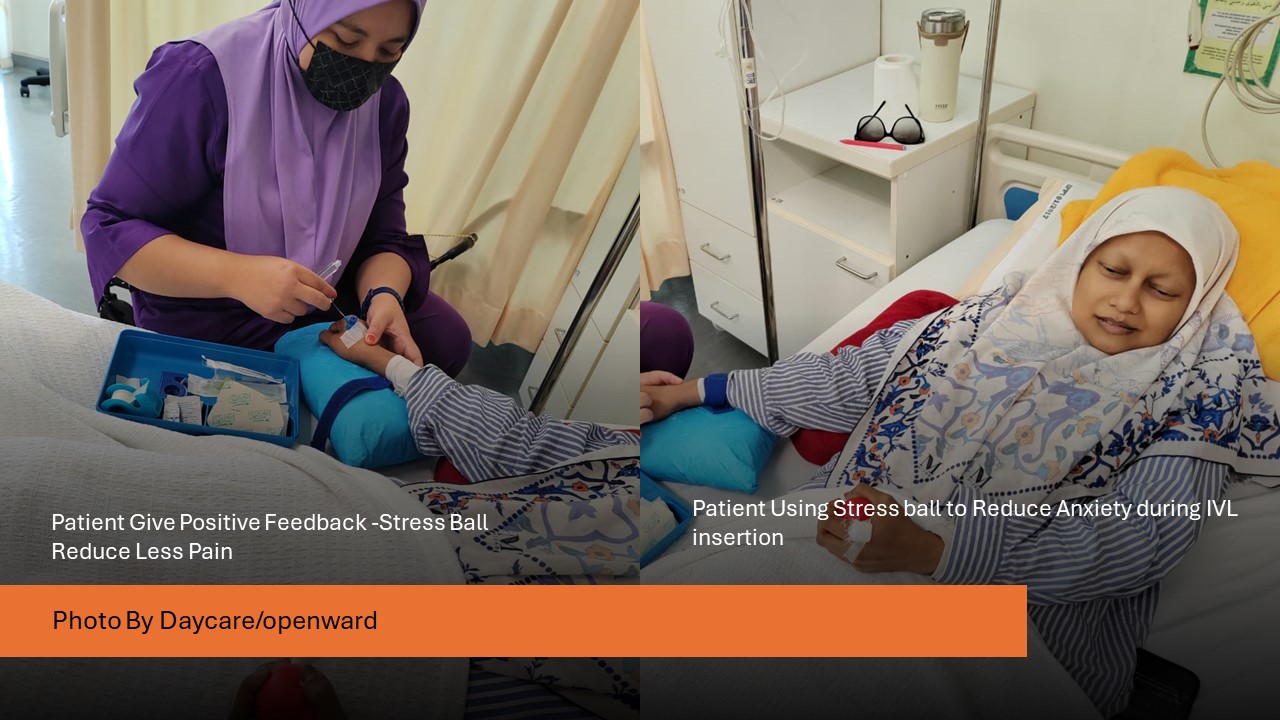Hospital environments inherently place high demands on both staff and patients, creating a need for effective wellness strategies that extend beyond traditional pharmacological interventions. This article explores simple, non-pharmacological techniques aimed at improving the well-being of hospital staff and patients alike. These strategies not only enhance the overall quality of healthcare by reducing stress and anxiety but also contribute to a more supportive and healing atmosphere. By implementing these easily accessible techniques, hospitals can improve staff productivity and patient satisfaction, ultimately fostering a healthier environment conducive to recovery and professional fulfilment. The high-stakes nature of hospital settings imposes significant emotional and physical demands on all occupants, from healthcare providers to patients. The urgency and intensity inherent in such environments often lead to heightened stress levels, which can adversely affect both health outcomes and workplace efficiency. To address these challenges, it is crucial to implement straightforward, non-pharmacological wellness strategies that support the mental and physical well-being of everyone within the hospital.
Part A: Enhancing Staff Wellness
Breathing Exercises During Shifts
Breathing exercises are a vital, easily integrated practice for hospital staff to manage stress and maintain mental acuity during shifts. Deep breathing techniques, such as diaphragmatic or abdominal breathing, can be performed during routine tasks or brief pauses in the day. The act of focusing on the breath helps divert attention from stressors, leading to physiological benefits such as lowered heart rate and reduced cortisol levels, which are markers of stress (Rogerson et al., 2024). According to Anderson (2018), engaging in these brief sessions of deep breathing not only significantly lowers stress levels but also enhances mental clarity and emotional resilience. This improved state of mind is essential for healthcare professionals who must remain attentive and empathetic, ensuring they provide the best care possible while also safeguarding their own well-being.
Stress balls for maintaining focus
Stress balls are not only effective in managing patient discomfort during medical procedures but also provide benefits for nurses, particularly in maintaining focus and managing work-related stress. The tactile stimulation from squeezing a stress ball can help nurses to momentarily divert their attention from the high-stress environment of medical settings, leading to reduced stress and muscle tension. This simple act can enhance mental clarity and attention span, which are crucial for nurses who need to remain alert and focused throughout their shifts.
Physical Activity Breaks
Physical activity breaks are an essential strategy for combating fatigue and maintaining energy levels among hospital staff, especially those working long shifts. Implementing 5-minute breaks every hour for simple activities such as stretching, walking, or light exercises can make a significant difference in overall stamina and alertness. Martin et al. (2020) highlights the benefits of these short, regular bursts of physical activity, noting that they not only improve stamina but also effectively reduce fatigue. This approach ensures that healthcare professionals can sustain their performance throughout their shifts, enhancing both their health and their ability to provide high-quality care. Simple stretching routine that hospital staff can easily perform during a 5-minute break to reduce fatigue and improve energy during long shifts:
Neck Stretch: Gently tilt your head toward your shoulder and hold for 15-20 seconds on each side. This stretch helps relieve tension in the neck and shoulders, areas that often get stiff from prolonged standing or sitting.
Shoulder Shrugs: Lift your shoulders up towards your ears and then release them back down. Repeat this 5-10 times to reduce shoulder tension and improve circulation.
Wrist and Finger Stretches: Extend your arm in front, palm up, and gently pull the fingers back toward your body with the other hand. Hold for 10-15 seconds, then switch hands. This is particularly useful for those who frequently use computers or write.
Each of these stretches can be done quickly and does not require special equipment, making them ideal for busy healthcare professionals during their breaks. Regularly performing these stretches helps maintain flexibility, reduce stress, and prevent muscle stiffness associated with long periods of inactivity or repetitive movement.
Part B: Enhancing Patient Wellness
Nurses, who spend considerable time with patients, are ideally positioned to assess and effectively respond to their needs. Their prolonged interaction allows for a deeper understanding of patients' conditions, enabling them to provide tailored health education and wellness strategies. Here are some techniques nurses can use to enhance patient wellness:
Breathing and Relaxation Techniques to Manage Anxiety
Breathing and relaxation techniques are critical tools that nurses can teach patients to help manage anxiety and palpitations effectively. One such method involves deep breathing exercises, which are simple yet profoundly impactful in alleviating acute stress responses. For example, nurses might instruct patients to slowly inhale through their nose for a count of five, hold that breath for three seconds, and then exhale slowly through the mouth for a count of seven. This controlled breathing technique helps to regulate the autonomic nervous system, which controls heart rate and can trigger anxiety responses. Smith (2021) supports the efficacy of these breathing exercises, noting that they not only help stabilize the heart rate but also significantly reduce levels of anxiety. This practice can be particularly beneficial during hospital stays, where patients may feel overwhelmed or anxious due to the unfamiliar environment or their medical condition. By incorporating these breathing techniques into patient care, nurses provide patients with a practical tool to manage their anxiety effectively, enhancing their overall comfort and experience during their hospitalization.
Advocating for Supplementary Therapies
Nurses play a pivotal role in advocating for supplementary therapies due to their extensive patient interaction, which is considerably more than other healthcare professionals. Their continuous monitoring and the strong relationships they develop allow them to gain deep insights into patients' conditions and needs. This comprehensive understanding enables nurses to assess care from a holistic perspective, considering not just medical but also emotional and social factors. By recommending additional services like physiotherapy or nutritional support during doctors' rounds, nurses ensure integrated, patient-centered care. Their position as care coordinators and patient advocates is crucial in enhancing recovery and satisfaction, effectively bridging the gap between various specialists and the patient’s daily experiences and needs in the healthcare setting (Lee, Choi, & Kim ,2020).
Stress balls for Comfort and Pain Management
Stress balls are simple, yet effective tools for managing stress and anxiety. Research supports their use in various settings, showing benefits such as reduced muscular tension and increased attention spans. For instance, using a stress ball during medical procedures like endoscopy has been found to significantly lower patients' pain and anxiety levels post-procedure, even though it doesn't impact pain during the procedure itself (Rogerson et al., 2024).
The use of stress balls during intravenous line (IV) insertion can effectively reduce pain and discomfort. For example, a pilot randomized controlled trial investigated the effectiveness of using a stress ball during vascular access cannulation in hemodialysis patients. The study found that patients who used a stress ball experienced significantly lower pain scores compared to those who did not use any distraction techniques. This suggests that the distraction provided by squeezing a stress ball can effectively mitigate pain during such procedures (Rogerson et al., 2024).
Conclusion By implementing these straightforward, non-pharmacological strategies, hospital staff can significantly enhance both their wellness and that of their patients. Nurses, in particular, are well-placed to tailor care approaches through close patient interactions, suggesting integrative therapies that extend beyond traditional medicine. These cost-effective techniques not only improve patient outcomes but also reduce hospital stays, thereby making hospitals more conducive to healing. Additionally, for the staff, these wellness strategies increase overall health and wellness, which can lead to enhanced productivity and job satisfaction. By fostering a healthier work environment and promoting quicker patient recovery, hospitals can see a reduction in staff burnout and turnover, further enhancing the caregiving process. This not only improves patient outcomes but also enriches the caregiving process, thereby making hospitals more conducive to healing.
References
1. Anderson, J. (2018). Effects of breathing exercises on cortisol levels and mental health. Journal of Nursing Studies.
2. Lee, C., Choi, M., & Kim, S. (2020). The effectiveness of guided imagery on pain and anxiety in health care settings: A systematic review. Journal of Pain Research.
3. Martin, L., Smith, T., & Kumar, P. (2020). Physical activity in the workplace: A systematic review. Workplace Health & Safety.
4. Rogerson, O., Wilding, S., Prudenzi, A., & O'Connor, D. B. (2024). Effectiveness of stress management interventions to change cortisol levels: A systematic review and meta-analysis. Psychoneuroendocrinology, 159, 106415.
https://doi.org/10.1016/j.psyneuen.2023.106415 5. Smith, J. (2021). Controlled breathing therapies as a tool for health enhancement. Journal of Integrative Medicine.
6. Taylor, E., Jones, L., & Thomas, V. (2019). Mindfulness training for healthcare professionals and its role in burnout prevention: A literature review. Journal of Health Psychology.




